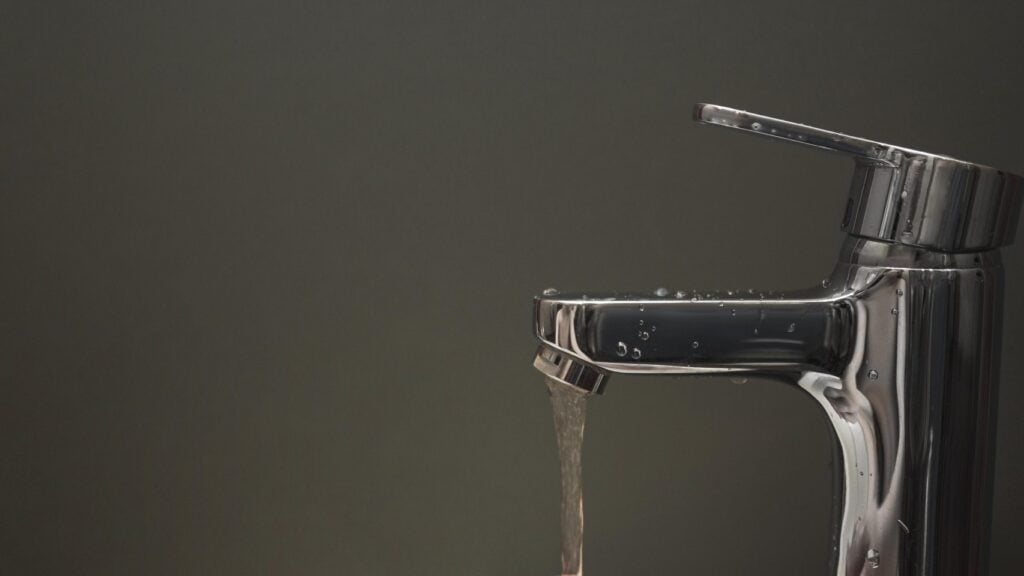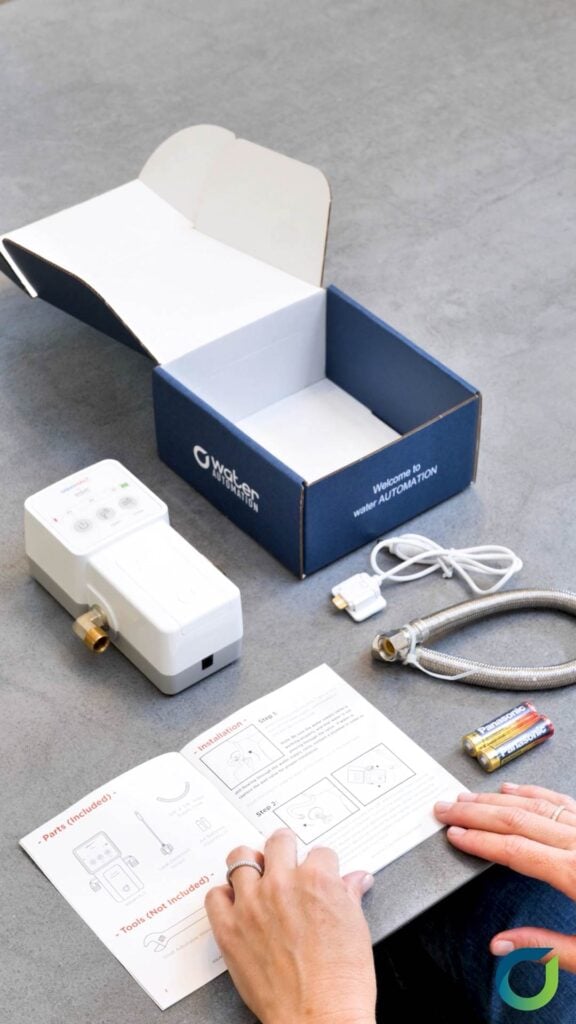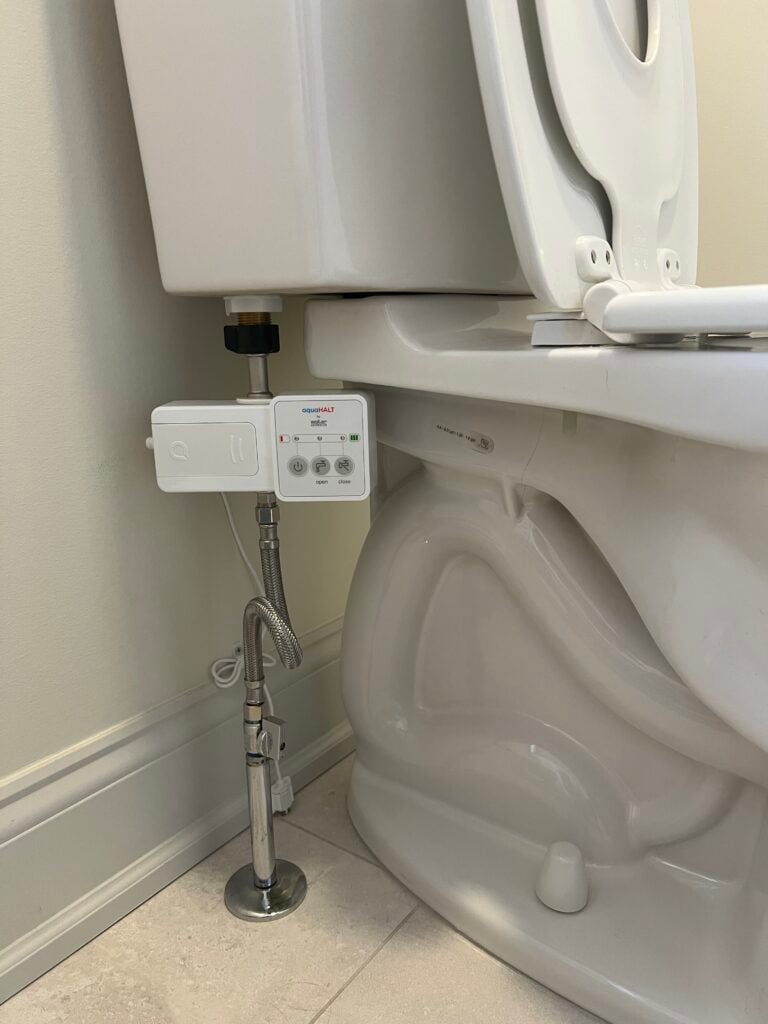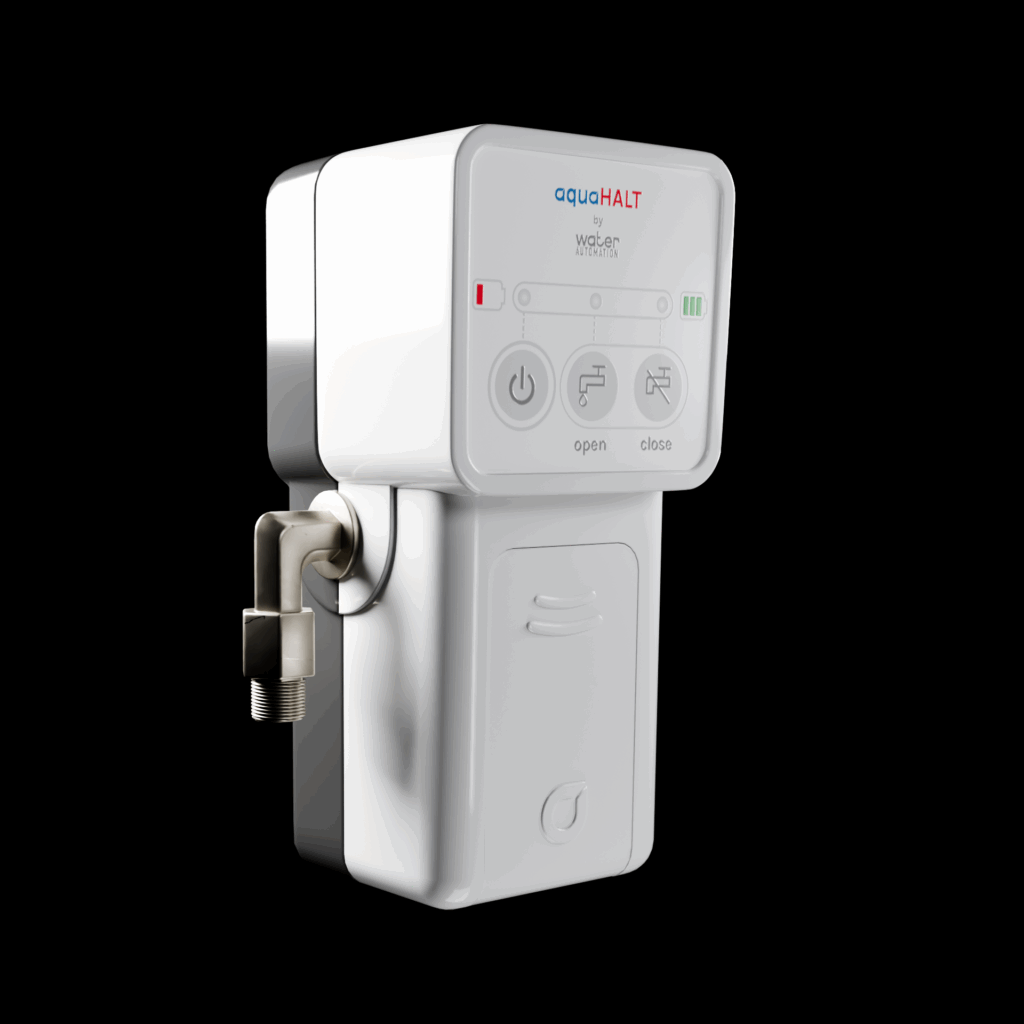
“A small leak will sink a great ship.” – Benjamin Franklin
And in business or property management, that’s not a metaphor
Every year, undetected water leaks cost billions—yes, billions—in damage and wasted resources. In the U.S. alone, household leaks waste nearly 1 trillion gallons of water annually, according to the EPA. That’s not just a utility bill problem. That’s structural damage, mold remediation, operational downtime, insurance claims. It’s a domino effect—and it starts with a drip.
That’s why commercial water leak detection isn’t just a maintenance task—it’s an essential safeguard for your property, operations, and budget.
I’ve walked into commercial buildings where the ceiling was sagging like a balloon ready to burst. I’ve seen server rooms shut down because a pipe behind a wall quietly failed over a long weekend. Most of these disasters didn’t start loud. They started invisible.
So here’s the goal: catch leaks before they show up on your floor, in your walls, or—worse—in your bottom line.
Let’s get tactical. Water leaks aren’t always dramatic. Most aren’t. But they all leave clues. The key is knowing where to look and what tools to trust.
Start with the numbers. Compare your current water bills to past months. Any unexplained spikes? That’s your first red flag. Especially if your usage goes up when nothing else changes.
Actionable tip: Install a smart water meter if you haven’t already. These devices offer real-time tracking and often come with alerts for abnormal usage. Some even break down consumption zone by zone.
Mechanical rooms. Restrooms. Kitchens. HVAC units. Anywhere water moves or is stored, inspect regularly. Don’t just look—listen. Hissing or dripping behind walls often means a pipe has sprung a slow leak.
Pro tip: Use an infrared thermal camera to scan walls and floors. Cold spots can indicate hidden moisture even before stains or swelling show up.
Low pressure? That could be a leak. But don’t rely on feel alone. Perform periodic pressure tests on your plumbing systems—especially in larger facilities. This helps you isolate sections of the system that may be compromised.
Yes, sensors cost money. But leaks cost more. Install water sensors in vulnerable areas: beneath sinks, behind dishwashers, around water heaters. Modern sensors can send alerts to your phone or building management system instantly.
Where to place them:
The real difference isn’t just in tools—it’s in habits. Create a leak detection checklist. Assign responsibility. Make inspections part of routine maintenance, not a reactive scramble.
If you detect a leak, don’t just patch it. Investigate the cause. Is it corrosion? Poor insulation? Pipe movement due to building settling? Fixing the symptom without the source leads to repeat failures.
Document everything. Even a minor leak should be logged, mapped, and scheduled for follow-up. This creates a data trail that helps identify patterns and prevent future damage.
Here’s the truth: water doesn’t wait. And if you’re not actively looking for leaks, you’re probably already paying for one.
Detection isn’t sexy. But prevention is profitable. If you run a facility, manage a property, or oversee infrastructure—commercial water leak detection is one of the smartest, most cost-effective forms of risk management you can invest in.
And in risk management, the smallest things—like a hidden drip—can make the biggest difference.

Remember when “smart home” devices were supposed to make life easier?
Now your toaster needs a Wi-Fi password, your light bulbs demand firmware updates, and your smart thermostat only listens if you speak fluent robot.
Leak detectors shouldn’t be like that – and with aquaHALT, they’re not.
At waterAUTOMATION, we believe home protection should be smart, but not complicated. You don’t need an app, a cloud account, or a three-hour YouTube tutorial. You just need something that works.
Somewhere between your fridge’s ice maker and your smart speaker that won’t stop listening, technology got a little… much.
aquaHALT brings sanity back.
This little $150 device does exactly what you want: detects water where it shouldn’t be and lets you know immediately.
No pairing, no syncing, no “device not found.”
Just you, two AA batteries, and pure peace of mind.
Setting up aquaHALT is so simple, it’s almost suspicious.
It’s like putting down a smoke detector for leaks – only quieter (until it’s not).
Leaks don’t check your connection before they strike. They don’t care if your router’s down or if your smart hub needs a reboot.
That’s why aquaHALT is proudly offline. It doesn’t need Wi-Fi, power, or your phone to function.
Even during a blackout, it stays alert, powered by its trusty AA batteries.
When it detects water, it sounds the alarm immediately – no buffering, no delay, no cloud dependency.
Think of your home like a map of potential mini-disasters. If water can flow there, it can also leak there.
Here are the best places to install your aquaHALT devices for all-around protection:
The most common source of leaks – out of sight, out of mind, and often out of hand.
Dishwashers, fridges with water lines, and washing machines love to leak just enough to ruin your floor slowly.
A ticking time bomb of pressure and heat. One burst valve and you’ve got an indoor hot spring.
If water’s getting in, you’ll want to know before it becomes a swimming pool.
Because tile grout and caulking age like milk, not wine.
By covering these areas, you turn your home into a leak-free fortress.
Once placed, aquaHALT just works. No maintenance reminders, no subscription renewals, no app notifications telling you it’s lonely.
It’s the kind of product you forget exists – until it saves you thousands.
And that’s the point. Real smart technology is the kind you never have to think about.
A lot of companies want to sell you “connected” everything – connected fridges, connected toothbrushes, probably connected socks next year.
But sometimes, the smartest solution is the simplest one. aquaHALT doesn’t compete for Wi-Fi bandwidth or demand voice commands. It just listens for water – 24/7, quietly and faithfully.
No apps. No wires. No nonsense.
Your home deserves protection that’s dependable, not demanding. aquaHALT brings leak detection back to basics – simple, effective, and completely foolproof.
Because the best tech isn’t the one that’s loudest, flashiest, or most complicated.
It’s the one that quietly protects your home while you go about your day.

Let’s face it – owning or renting a property comes with enough stress already.
Mortgages, maintenance, insurance, bills… and now you’re supposed to worry about water leaks too?
Good news: you don’t need to spend thousands on a “smart home system” that talks more than it works.
You just need one simple, affordable device that quietly prevents one of the most common – and costly – home disasters.
That device is aquaHALT, from the team at water AUTOMATION.
It’s small, battery-powered, and laser-focused on one job: keeping your home dry.
Leaks aren’t polite. They don’t care if you own a penthouse or rent a tiny apartment – when water wants out, it’ll find a way.
And when it does, the damage adds up fast.
A burst washing machine hose can release hundreds of liters of water in an hour.
A dripping pipe can rot wood, destroy drywall, and feed mold like an all-you-can-eat buffet.
And fixing it? That’s a four-figure invoice waiting to happen.
You shouldn’t have to choose between protecting your home and protecting your bank account.
The $150 Solution That Does the Work of $10,000 Repairs
That’s where aquaHALT comes in – your affordable, no-nonsense answer to expensive problems.
For $150, you get a sleek, reliable leak detector that:
It’s the kind of purchase that quietly pays for itself the first time it prevents a soaked floor or mold cleanup.
aquaHALT isn’t just for homeowners. It’s for anyone who wants to avoid water damage – landlords, tenants, property managers, even Airbnb hosts.
If you manage multiple units, a few devices can protect every bathroom and kitchen under your care.
If you rent, you can place it under your sink or washing machine for peace of mind (and fewer awkward calls to your landlord).
No fancy systems. No contracts. No tech wizardry required. Just smart, affordable prevention.
When it comes to home protection, simple wins every time.
aquaHALT isn’t trying to be the next flashy “smart home” gadget – it’s designed to be invisible until it’s needed.
Set it. Forget it.
Let it listen quietly for leaks while you go about your day.
No updates. No subscriptions. No nonsense.
It’s easy to underestimate a small device – until it saves your kitchen, laundry room, or basement.
And while most homeowners assume water damage will never happen to them, the statistics tell another story:
For $150, you could join the minority – the people who don’t have to call their insurance company.
The real value of aquaHALT isn’t just in preventing damage – it’s in knowing your home is being protected 24/7.
Whether you’re at work, on holiday, or just sleeping soundly, it’s always on guard.
Because the best home security doesn’t just keep out intruders – it keeps out disaster.
At waterAUTOMATION, we built aquaHALT for people who value simplicity, reliability, and common sense.
Not everyone needs a smart hub. Not everyone wants another device to configure.
But everyone deserves a dry home.
aquaHALT proves that real innovation isn’t about bells and whistles – it’s about solving real problems affordably.
In the end, protecting your property doesn’t have to be fancy – it just has to work.
For $150, you can prevent thousands in damage, protect your belongings, and keep your stress levels low.
Two AA batteries.
Zero hassle.
One dry, happy home.
That’s aquaHALT – small device, massive peace of mind.

Nobody plans for water damage. It’s not like you wake up one morning and think,
“You know what my week needs? A burst pipe and a $6,000 repair bill.”
But water has a way of showing up uninvited. One tiny leak under the sink or behind the washing machine, and your relaxing weekend suddenly turns into a Home Depot marathon.
Fortunately, protecting your home from leaks doesn’t require a plumber, a contractor, or a meltdown. You can do it yourself – easily – and it starts with knowing where to look.
Water is sneaky. It doesn’t gush out dramatically every time – sometimes, it just seeps quietly, biding its time.
Here are the most common hideouts:
Finding leaks early isn’t glamorous – but neither is ripping out a moldy wall.
Here’s the thing: when a leak causes serious damage, insurance rarely makes it easy.
Most policies cover sudden leaks (like a burst pipe), but not gradual ones (like a slow drip over six months).
So if your bathroom turns into a science experiment because of a hidden leak, there’s a good chance your insurer will shrug.
Then come the forms, the photos, the emails that start with “We regret to inform you…”
If you’ve ever filed a water-damage claim, you know it’s about as fun as getting a root canal from an accountant.
That’s why early detection isn’t just about home maintenance – it’s about avoiding paperwork-induced rage.
A leak detector like aquaHALT doesn’t just prevent water damage – it prevents the argument that follows.
When you can show your insurance company that you took preventative measures, you’re not just covered – you’re credible.
It’s like telling them, “Look, I wasn’t negligent. I had backup.”
That tiny $150 device can be the difference between a denied claim and a “no problem, we’ve got you covered.”
If you can open a drawer and find two AA batteries, congratulations – you can install aquaHALT.
Here’s your entire to-do list:
That’s it. No drilling, no Wi-Fi setup, no technician visit.
You don’t even need to download an app – aquaHALT is 100% offline and proud of it.
A plumber is great after the disaster. But preventing one? That’s your job – and it’s easy.
For the cost of a dinner date, you can protect your kitchen, laundry, and bathroom from costly leaks.
Even better, you’ll have the satisfaction of saying, “I handled that,” when your neighbor is still on hold with their insurance company.
aquaHALT is designed for normal people, not tech geniuses or home-improvement influencers.
It’s prevention for everyone – whether you rent, own, manage properties, or just hate surprises.
The reason aquaHALT fits so well in the DIY world is because it’s not flashy – it’s functional.
Just a smart little device that listens for water and alerts you the moment something goes wrong.
Two AA batteries. Zero nonsense.
Imagine placing one under your sink and catching a leak before it soaks the cabinet.
Or discovering your washing machine hose was dripping before it warped the floor.
Or preventing a tenant’s “small leak” from turning into a month-long insurance battle.
That’s what aquaHALT does – it gives you time.
Time to fix the problem, call the plumber, or just shut the valve before it’s too late.
There’s something deeply satisfying about being proactive – especially when it saves you thousands and a massive headache.
Water doesn’t wait. So don’t wait on water.
Do it yourself. Keep your home dry. And make your insurance company slightly less smug.
“Heated water lines: twice the potential leak, twice the headache.” I read that, and thought: “Exactly.” Every sink—mine included—has hot and cold lines. Two points of failure. Then I filed away the aquaHALT H/C. One valve. Both lines. Instant comfort.
Why aquaHALT H/C Works for Me
Forget chaotic setups. This device takes hot and cold feeds in a clean, single unit. Battery powered. Install in minutes. And then it does its job—quietly, reliably—for up to 15 years. That’s what I expect from a true sink leak detection system.
Easy to Install
The aquaHALT H/C impressed me because it solved two problems with one solution. Most sinks have both hot and cold feeds, which often means double the risk and double the equipment. With this sink leak detection system, I only needed a single device for total coverage. That kept installation simple and cost lower. More importantly, it cut down on points of failure. If you’ve ever had a hot water leak in a cabinet, you know how much steam and heat damage it can cause compared to cold water. This unit neutralizes both risks, instantly and effectively.
Key Benefits
My Experience
Once I had it in, I actually forgot it was there. Until I ran a test and it shut off instantly. That’s when it clicked for me: real protection doesn’t need my attention. It just needs to work. And that’s the promise of a reliable sink leak detection system.
If you’ve secured your toilets, don’t stop there. Sink lines matter, too. The H/C is elegant. Compact. Protective. And in my book—that makes it essential.